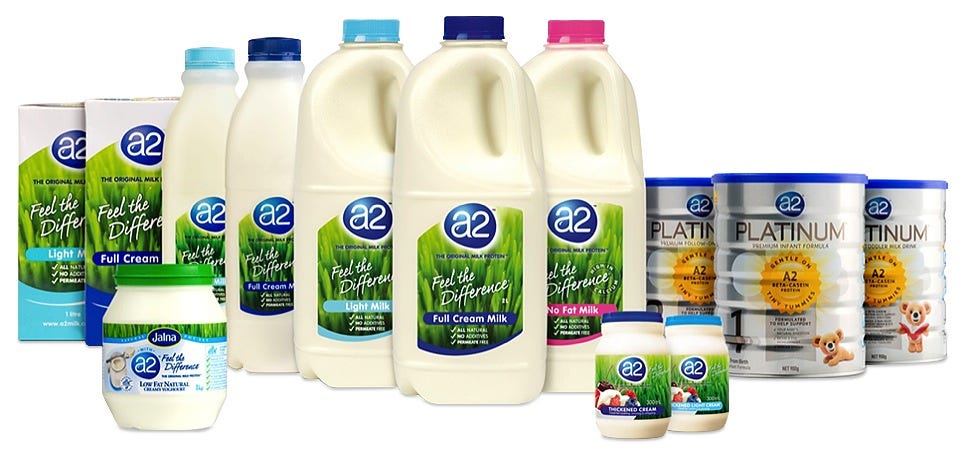I had the great pleasure of interviewing Ryan Molloy, CEO of RedFern Digital. RedFern Digital is a full-service marketing agency based in Shanghai that helps international brands succeed in China, with a particular focus on e-commerce. Their clients have included Burger King, Fireball Whisky, and Panasonic. Ryan is originally from the UK, but grew up in Suzhou and has been living in China for most of his life. Prior to RedFern, Ryan worked in market research and consulting.
Having lived and worked in both China and the UK, Ryan has a great East West perspective that you’ll see in this interview!

What are the most exciting trends you are seeing in China today?
There are two main angles to trends in China. You’ve got platforms and you’ve got consumers. And we’re constantly trying to find our balance between the two.
Chinese platforms are so dynamic. Douyin changed their commission structure this week. Little Red Book changed their commission structure the previous week. These little changes have major and immediate impact on both our strategy and profitability. Although I hate it, it keeps me on my toes. Our digital strategy for brands last November is completely different than the strategy today. A client might say to us ‘Well this isn’t what you told us six months ago.’ and we’ll reply, ‘Well things have dramatically changed over the last six months and some platforms we don’t even use anymore!’
The other angle is consumer trends, because China is very young in the way people react to products. Consumer trends in China will just hit all at once. For example, I was talking to a friend who works in the Japanese hair dye industry. I was telling him how hair dye is this insane recent trend in China. Everyone in our office has multi-colored hair now. One year, everyone had these little stems and flowers in their hair. And each time, I kept asking myself, ‘Where did this start?’ You talk about trends in the West and they’re more vague, larger concepts. In China, they’re right in front of you.
In China, modernisation is still pretty new and Chinese people want to add their own spice to modern trends. When consumers come up with something new, it’s always very different. We had plant-based food become a hit recently. Within the first week of this trend, there were 10 million searches on Baidu. All of these trends suddenly appear and we have to jump on them quickly. Part of our job is go out and help these brands in the West realise the opportunity. As an example, we are working with a Western plant-based meat company right now. Based on what we’re seeing in market, we might approach them and say, ‘You guys have to come to China.’ We had a similar case with Sara Lee cheesecakes. Who would’ve thought that cheesecakes would become a big thing in China? In the West, cheesecake is something we’ve always had. We’ve seen the category change a little bit and maybe there are new flavors like chocolate cheesecake, but the category hasn’t dramatically changed. But in China, the category is born overnight. I like that.

How has the coronavirus affected your business and other businesses in your industry?
Our business is up a lot. We’re likely going to double this year. We were struggling in the first four months of 2020 and then things started turning around in April or May. I think a lot of global brands are looking to China since it’s now been open for so long relative to other countries. But at the same time, I definitely see the overall industry struggling. I interviewed six applicants for a role at our company yesterday. All of them had come from advertising agencies that had gone out of business because of Covid.
We work in the young, digital e-commerce space and lots of brands now have to put their product online. So e-commerce is a necessary channel for your brand. On other hand—events, traditional media, traditional advertising agencies or anything considered not 100% essential for your business are the first things a major brand will cut this year.
What is one thing people outside of China misunderstand about the region?
People misunderstand how difficult it is. That is the number one thing. Brands might sell in the US and UK by dropping off a few containers that find their way to a supermarket. You can do a large campaign on Facebook or Instagram and you’ll get traction if your product is good. In China, offline retail is so segmented. The top 100 chain stores are the same size as Tmall. In the US, CostCo and Wal-Mart will take something like 20% of the market but in China you have this situation where there are so many offline stores, it’s hard to break in. For brands doing e-commerce in the West, there’s pretty much Amazon. In China, there are like seven main e-commerce platforms. You need to decide which ones to choose, how to work with them, etc.
Western brands are also very overconfident. People believe that in China a product will just sell itself, since the purchasing power of China is growing. That doesn’t easily happen because there’s a lot of competition. People also underestimate the scale of China. I was speaking to a client the other day and there were clearly misaligned expectations on how many people you can reach with a certain ad budget. If you come into China with a $50,000 ad budget, you’ll be able to reach one suburb in Shanghai. You won’t hit the entire East Coast of China.
What are some companies you admire in Asia?
One that’s really, really impressive is Pinduoduo. We haven’t worked with them personally, since all of our brands are premium. That said, all of your products end up getting sold on Pinduoduo, whether you like it or not. We have a set distribution price, but Pinduoduo usually picks it up, makes a tiny margin, and has the investment to bring in a huge number of users. I think their user base might be bigger than Tmall now. All of the e-commerce companies in China are extremely impressive. In comparison to Amazon, the number of tools that Chinese e-commerce companies have to drive more purchases are really insane.
In terms of Western companies, the most successful ones really understand what Chinese consumers are looking for. They understand the power of e-commerce. They grow as many channels as possible, using marketing with direct channel relevance rather than just making this big, loud noise everywhere. They make the packaging simple. They make their brand story simple. Some Western brands can have tiny market share in places like the UK while having a much more dominant market position in China.
One good example is the milk brand A2. They do fresh milk, powdered milk, and more. They told a story from Australia, managed to own their IP in China, and are now making billions of dollars here. They did a great job and followed the playbook we usually suggest to clients—they started with small, direct activations. As they got bigger, their marketing budget grew and now they’ve got some of the most famous Chinese celebrities in their campaigns. They were also investing in Chinese marketing within Australia, like targeting Chinese tourists and Chinese students in Australia.

What is the single most important piece of advice you would give to someone trying to get their business to thrive in this time period?
Go online. If you look at the sales of retail in the West, they’re not necessarily down. We know that certain categories and clients in the West have had an increase in sales during Covid. People still need to eat food and still want to buy things. If you don’t have an online offering, then people can’t access your products.
The second thing - brands need to be faster in their adaptability. The geopolitical situation has now meant that we can’t just make decisions over six months. Brands need to change their business quickly in order to match things like Covid. We’ve worked with some large food and beverage companies who don’t know what to do right now. I kept thinking to myself, ‘You guys have the ingredients. You should make a retail product. Why not?’ Brands need to move more quickly. We’ve seen smaller brands be very agile, increase their budgets and do well in China this year. Although at the same time, a lot of brands have suffered.
Quickfire Questions…
A - What’s the best thing you have watched recently? (Film, TV Show, Ted Talk, Youtube Video, etc.)
I watched a really good British movie yesterday. It’s called Tyrannosaur. It’s not about dinosaurs. It has Olivia Coleman and is a great story, though quite depressing. It shows the power of circumstances people find themselves in that although they might appear to be bad people, they aren’t necessarily bad people.
B - What’s the best thing you have read recently? (Book, Article, Research Report, Tweetstorm, etc.)
I read Shoe Dog a few months ago. I’m not really into business books but thought that was a good balance between life lessons and business lessons.
C - What’s the best thing you have listened to recently? (Song, Album, Artist, Podcast, Audiobook, etc.)
‘Postcards from Italy’ by Beirut. I was listening to that song this morning.















Share this post